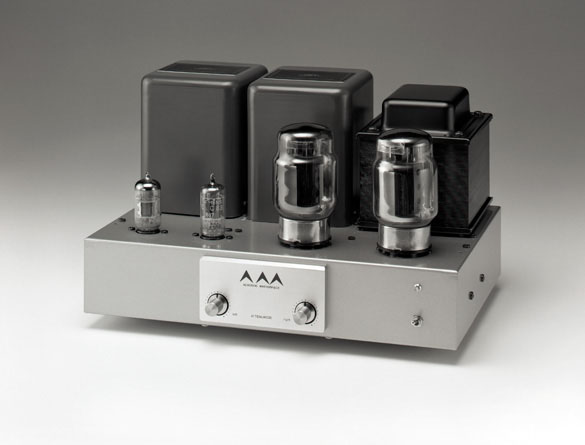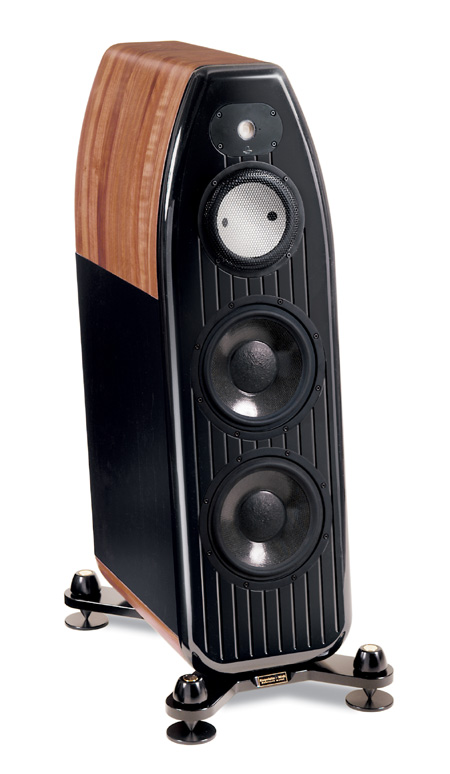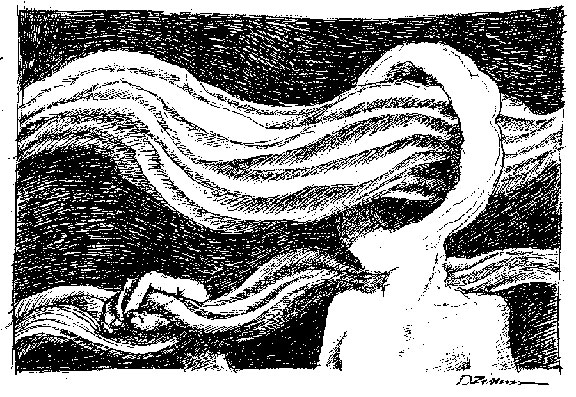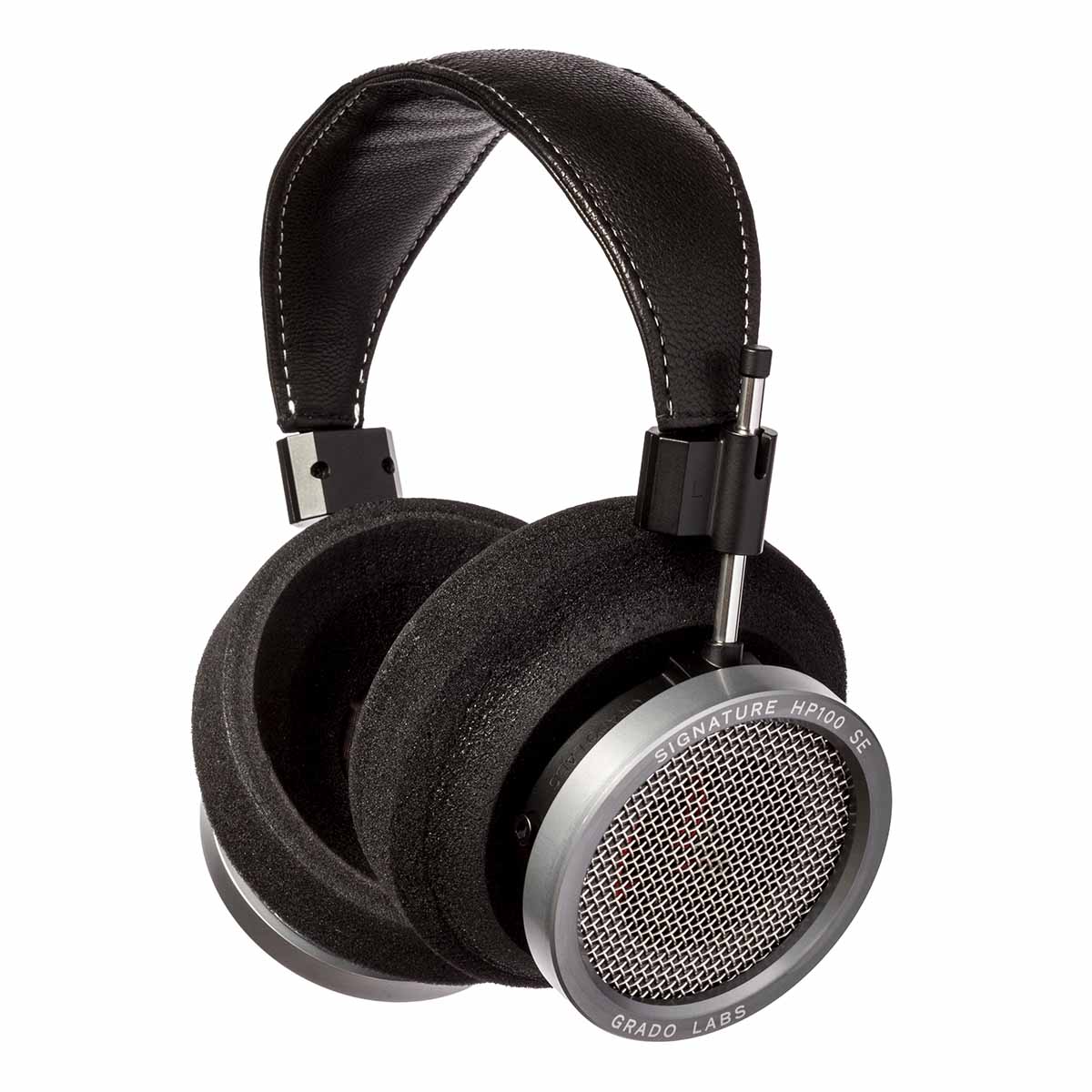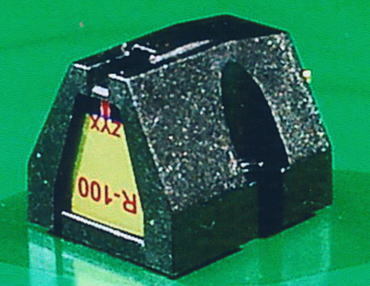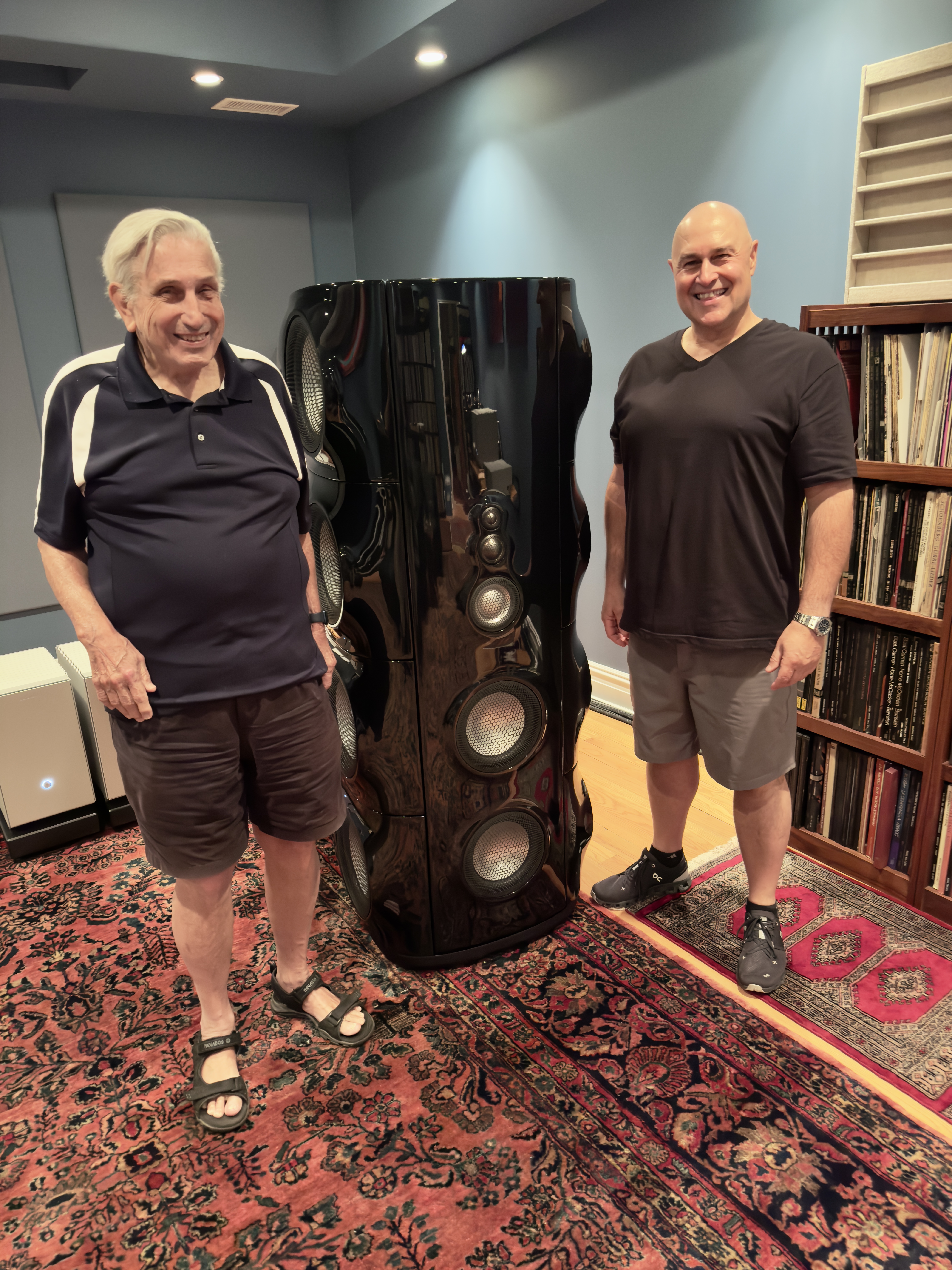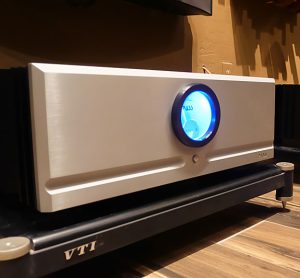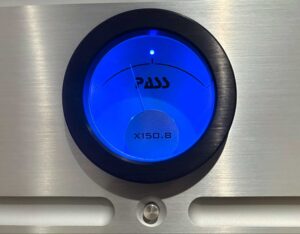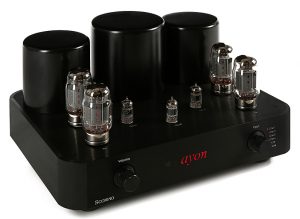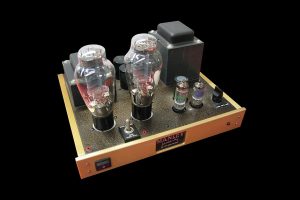This article, by Dave Clark, Victor Chavira, Larry Cox, and Francisco Duran, originally ran when audioMUSINGS was in print - Issue 6, 1998.
Some things in life are inevitable. Death and taxes are the obvious ones, but I would add one more—the perfection of low-powered amplifiers, in this case an eleven-watt tube amp that uses two KT-88s and two 12AX7s, accepts only one input, and has dual attenuators to adjust for input sensitivity (thereby eliminating the need for a preamp). Obviously intended for minimalist systems, the Acoustic Masterpiece M-101 may be all an audiophile who is more interested in music than gear will ever need.
The resurgence of interest in single-ended tube amplifiers has brought about a market in which it seems that anyone with a soldering iron has created one, but Air-Tight has been around long enough to perfect the genre. My experience with low-powered amps is limited to ones in the 20 to 50 watt range. These are certainly not in the same power class as amps of the 2 to 12 watt variety, but much of the circuit topology and execution is similar, and so are many of their musical traits. Nevertheless, you may want to take this review with a grain of salt.
By the way, the M-101 has only one set of taps, wired for 8 ohms, and is a kit of sorts, requiring a few steps to get the thing together. You can re-wire it for 16 ohms, which will give you three to eight watts of output, and you can even run it in triode. As delivered, the AT-101 was wired for eleven class-A, single-ended watts. I used the M-101 without a preamp, which is as straightforward as you can get. Speakers were the Chario Hyper 2000, which at 89 dB and 4 ohms are not necessarily the ideal match for the M-101, but they are mine and I know their limitations fairly well.
So what can the M-101 do that I can’t get from our normal set-up? Well, the bass QUANTITY is not nearly as deep and powerful, nor is it as taut and muscular. Ask me if I give a hoot. This never once detracted from the musical experience. The bass QUALITY is equal to, if not better than that produced with high-powered solid state amps, which is no doubt why the lack of bass oomph was not missed. The tactile detailing of bass notes is the M-101’s strength, not the ability to shake the room. The M-101 will surprise you in how dynamic and punchy eleven watts can sound. I find nothing to fault here. The amp never seemed to run out of steam. Much like the little engine that could, it just kept rolling along, with no strain or compression as the music became louder or more complex. I never felt the need or desire to really crank the system, but the Charios gave out before I heard anything approaching brittleness or any other sign of the M-101 being overtaxed. Perfection? At eleven watts, of course not. The Charios appear to be a synergistic match, both in terms of their efficiency and bass reproduction. These two areas are sorely dependent upon the speakers the unit will be mated with. I can see dry and inefficient speakers being a match made in hell.
All right, so the M-101 is a dynamic little sucker able to reproduce the bass region with surprisingly high marks. What about the rest of what we audiophiles want from a power amp (or should I call the M-101 an integrated)? Well, here’s the real kicker. As good as the M-101 is in these things, the rest is just as glorious. Never overly warm or rich, the midrange is reproduced with a light, honest hand. There aren’t any odd third-harmonic distortions to blur or obstruct musical enjoyment by creating a "false" presentation of what’s being reproduced. From the midrange up, all is well-rendered, and is very detailed without being glassy or bright. The midrange, in all its textural liquidity, is more laid back than forceful. The soundstage is behind the plane of the speakers rather than out front, but not to the point of detracting from the music. (I am less critical of this area of performance than Carol, who feels that the M-101 is slightly removed or withdrawn. She wants everything out front, more in your face.) The M-101 was almost magical in how images sprang to life in a wide and lifelike soundfield. Very emotional and tactile, with images bordering on being more 3D than 2D.
Shortcomings? "Eleven watts" says it all, though this can be overcome without too much difficulty. Having only one input may be a cause for second thoughts, but what’s the big deal? Sonically, I could little to fault. Sure, the sound is slightly recessed, and the bass is not in the same league as a Krell, nor are the dynamics. But the M-101 is aimed at a different breed of audiophile—a real music lover, not someone who wants to impress his friends with audio jewelry. Yeah, there may be some sweetness to the music that is neither really accurate nor "honest," but again, the M-101 is for the serious music lover. It conveys the music as well as an amplifier can do.
The M-101 is very enjoyable and enticing. I spent many long hours listening to how well it treated my choices of musical poison. It just sounded so "right." I would drop the cash on the M-101 if I could. To quote Carol, "In a perfect world we would have a larger house, more money, and another room where we could set up a second system with the Charios and the M-101 and not have to sell what we have." All I can say is, "Let’s start making this a perfect world." Dave Clark
The Acoustic Masterpiece M-101, designed by the principals of Air Tight, is a tiny little integrated amp whose size invites you to coddle it. Its mass, however, won’t allow that. Despite being quite small, the M-101 weighs a ton—it’s got two very heavy and expensive Tarama transformers that occupy about one third of its real estate. The incongruity between size and weight is reflected in the M101’s performance. In ultralinear mode, there are only eight watts to go around, but those eight watts perform completely out of scale to expectation. It’s not the watts, dear, it’s the drive. My 100-watt Classe CA100 is short in the drive department, at least as far as my 83dB-efficient speakers go, but the M101 has more heft. I’m not shoveling baloney. The M-101 just gives you more bounce per ounce, er, watts. While the Audio Mastery isn’t the "final" match for my beloved (and annoying) ATC SCM20s, it tells me that the CA100 isn’t my final match, either.
The $1995 M-101 performs with such equanimity that after living with it for a while, it seems perfectly appropriate that a diminutively-sized amplifier can be an exceptional product without regard to price, size, or wattage. The bottom end compares favorably to the 250-watt Chord SPM1200B I borrowed not too long ago, which costs nearly three times as much. At only $500 more than the CA100, the M-101’s performance was way more substantial and poised. It draws pictures more completely than the Classe’s thin charcoal outlines. It fills in the color and nuance that is music, and it does so with muscle.
The Acoustic Masterpiece’s way with nuance was evident in many recordings, but especially with Israel Kamakawiwo’ole’s Facing Future. It reminded me why there is an audio hobby. Bass that is only implied by the Classe became a fully realized impression—the big, and I mean BIG, drums on this album pack the wallop that big drums should. The M-101’s bottom end conveys not only the unique timbre of the drum, but also the image of a drum skin under tension being struck, with lots of decay. This is the special kind of performance which implies the size and shape of the instrument. This performance was matched on other music. If there was a substantial bottom end in a piece of music, the Audio Mastery grabbed it and carried the rest of the music along. Not only that, it did so at nearly all volume levels, while the Classe needs to be cranking to grab hold of the ATC’s bottom end. All this with only eight watts!
The Acoustic Masterpiece’s pedigree was present at the top end of the spectrum, too. Cymbals sounded metallic, without being steely. There is a distinct sheen to live cymbals, but what is usually produced by audio gear—primarily solid state—is steeliness, and that is not the same at all. With the M-101, cymbals sound like metal shimmering in air, without any ringing added. Sometimes, amplifiers show off their top ends by presenting a ton of the recorded environment’s acoustic. The Acoustic Masterpiece didn’t retrieve every last detail, but enough so that the top end was noteworthy for its truth of timbre.
The midrange was quite present, but a little forward or vivid when paired with the ATCs. This vividness was rendered more pleasantly through Sherman’s system. In mine, the M-101’s midrange had a tendency to be slightly forward. I’ve found that a tilted-up presence region in my system generally places a sheen over timbre. For the most part, timbre was preserved, but it was just a bit more vivacious than I prefer.
Imaging was generally spot on, and a mark above my reference system’s. However, on loud, complex pieces, the M-101 wasn’t quite up to snuff. Imaging was good, or very good, with Alanis Morrisette’s Jagged Little Pill, Fiona Apple’s Tidal, and other popular music without powerful dynamic peaks. Although loud, this music isn’t complex. When I played complex pieces with dynamic crescendos, the Acoustic Masterpiece revealed its wattage. At the loudness peaks, images collapsed in space. Members of Gene Harris’ All Star Band became flea-sized (how embarrassing for grown men) on their Tribute to Count Basie. The boldness I’ve described went away, only to come back when things quieted down. What I think happened in each of these instances, from the vivid midrange to the imaging to the dynamic restrictions, is a function of an eight watt amplifier driving very inefficient speakers. Criticizing the M-101 for these things is like taking on Jack La Lane for swimming slowly while he’s pulling twelve boats.
I suspect that I could have a love affair with the M-101 if it were matched with my old Vandersteens or the Chario Hyper Reference 1000s. With the ATCs, I want a little less vividness and a little more dynamism. But frankly, who in the real world would think of matching an eight watt amplifier to an 83dB efficient speaker?
This is the first time I’ve heard a product designed by Airto Miura, Air Tight’s designer. The M-101’s performance explains to me why Air Tight is one of the hallowed brands in high-end audio. In the right room, and with the right accompanying equipment, it will be a best buy. Larry Cox
This wasn’t supposed to happen. No one in their right mind would power a pair of 86db planar speakers with an eight-watt single-ended tube integrated amp. A pairing like that would never occur in the real world, but welcome to Air Tight’s world. The Acoustic Masterpiece M-101 created quite a buzz at audioMUSINGS. Partners who’d heard it recognized that it had many of the qualities I favor, save one—power! At Larry Cox’s coaxing, I gladly accepted the little amp, even while scratching my head. Well, if it can drive Larry’s leadfoot ATCs, it should make at least some sound come out of my Maggies.
If the M-101 were a car, it would be a new Volkswagon Bug—small and cute. To see the little thing is to want to take it home. However, to do that you’ll need a pair of strong arms. It’s about half the size (and parts count) of my Anthem, yet just as heavy if not heavier. Most of that weight comes from the special Tamura transformers. Those massive transformers are wired to a pair of KT88 output tubes. Two small attenuators are located on the front of the amp, for connecting directly to a line level source. I am unable to give you any more technical information about the M-101 because the only literature that came with it was a set of schematics and building instructions in Japanese. (The amp is a kit.)
How did the amp sound? I’ll tell you this much. I played Romanza by Andrea Bocelli. I wept. End of review.
But seriously, how I acquired that disc is a story in itself. My wife is a fan of Spanish language soap operas. Her current favorite is Vivo Por Ella, which has a magnificent tenor singing the theme song. It’s an overly dramatic but catchy number. One evening, while loitering at Tower Records, I noticed a CD in the Latin music section with a bright red sticker on it that read "Contains the hit, Vivo Por Ella." Without listening to the disc or knowing much about the artist, I bought the CD and took it home for a listen on the M-101. The first track was "Volare," of Belaggio of Las Vegas fame. This was the track that brought tears to my eyes. A light came on in my head—the lowly soap opera singer and the new prince of tenors are one and the same! Suddenly, I understood the sadness and joy, the intimacy and mass appeal, the strong vulnerability of Andrea Bocelli. And, I understood what single-ended triode was all about. But this wasn’t supposed to happen.
The assumption is that owners of SETs are listening to harmonically pleasing second-order distortions, like looking at life through rose-colored glasses. I would argue that listening to music through the M-101 is to experience the complete absence of distortion, such was the purity of tone, richness, beauty, scale, and utter dimensionality of the sounds I heard. The M-101 made me seriously reconsider my attachment to Magneplanars in favor of a more sensitive design.
Owners of SETs don’t think in terms of audio babble buzzwords but I’d venture to say, more along the lines of musicians. It’s all about tone, voice, depth of meaning, heart, and passion. I never played music on the M-101 at a level louder than medium. This diminished the impact and drama of some music, yet I have never been so acutely aware of the harmonic gradations of sound. The ruler was shortened (frequency response) but now had more gradations (scale). Returning to my Anthem revealed an amp with some similar qualities, but a coarser sound.
The Acoustic Masterpiece M-101 was the most emotionally involving amplifier I have had in my home. It is a consummate musical communicator. My journey with audioMusings began one year ago. How fitting that the journey has landed me in the world of SET. This is where I want to stay for a while. Victor Chavira
What’s in a name? Well, from Air Tight comes the Acoustic Masterpiece Model M-101, a little eight-watt stereo amplifier that comes either in kit form or ready to use. I was lucky enough to have the M-101 amplifier in my home at a time when I was looking for an amplifier, having sold my Classe amp and preamp and pressed my trusty Reference Line 1A passive control unit back into service. Would a tube amp be in my future?
At first I thought, eight watts! No way this amp is gonna work with my speakers, or with the type of music I like. Boy, was I wrong. This little red (actually silver) rooster strutted into my house and took over the audio roost without asking permission. The M-101 uses two KT88 tubes in ultralinear mode, but may be configured for triode as well. The amp is hard-wired. Like all Air Tight amps, it comes with dual attenuators on the front panel which may be bypassed, substituting a preamp for the one and only signal source input on the back of the unit. This little amp has some big cajones... I mean transformers. They look like they belong on an amp along the lines of, say, 100 watts.
While I was letting those eight watts warm up, I thought I would throw on a disc that was given to me a while back by our esteemed Dr. Banerjee, the FI Analogue Sampler, and one I picked up at the Stereophile show last summer, Mo Fi’s Ultradisk II Anniversary Sampler. (Yeah right, I’m a nerdy audiophile and this is all I listen to. You know me better than that. Despite being samplers, both CDs do contain some cool music. They’re better than some pseudo-jazz CDs I’ve heard that only pass for music.) Let me tell you, I was hooked. This amp draws you into the music, and quick. Instead of background music used to warm up the amp, these two CDs became a three-hour visit to my couch for an extended listening session. In the past year I’ve had a lot of good amps parade through my house—solid state, hybrid, and all tube—but none of them has had the sound quality of the M-101.
On track 5 of the Mo Fi sampler, John Coltrane’s "Giant Steps," and track 7, Thelonious Monk’s "Epistrophy," the little Air Tight delivered accuracy in the midrange that you could reach out and touch. There was a naturalness to the tonal balance and timbre of instruments that was as real as the real thing. Saxes were full bodied and fluid. Piano, drums, and bass sounded very cohesive and tuneful. I especially liked the way the M-101 showcased the flurry of notes Coltrane so masterfully blows on "Giant Steps." The same held true for Art Pepper’s "Straight No Chaser," the sax on this track again sounding fluid, detailed, fast, and full-bodied. On the jazz tracks on the FI sampler, I just became part of the music.
Okay, a good tube amp is supposed to have that magical midrange and that liquid and grainless quality, but how would this translate to rougher, more dynamic music? On to Neil Young’s Ragged Glory, Metallica’s And Justice For All, and Led Zeppelin. Once again, the M-101 acquitted itself quite well. Electric guitars sounded sweet, with just the right amount of edge. Zep’s electric blues were smoking. The recording lacks air and dimensionality, but that’s not what this music is about. For a better recording of electric blues, I spun Jimmy D. Lane’s Long Gone CD. His guitar sounded sharp, his rhythm section explosive. The higher notes of guitars were round and clear.
How about violins? Let’s change tracks again, what the heck. I’m having fun. On Telarc’s Copland, The Music of America, and Mercury’s Grofe, Grand Canyon Suite, violins were reproduced with both sweetness and body. The upper ranges of the orchestra sounded warm and round, but detailed and fast. Soundstage is another tube amp strength, and again the M-101 did not disappoint. Track 10 of the FI sampler, Shelly Manne’s "Poinciana," is a lot of fun. I was amazed at how dimensional and believable a soundstage the M-101 produced. It was full, wide, and deep. Images were not only in place, but you could imagine their fronts, backs, and sides. On "Poinciana," sounds were buzzing around in a very three-dimensional space. Images were solid. Something I found amusing, though I usually don’t pay attention to it unless it stands out, was applause on live recordings. On some of the better recordings I played, the applause sounded very lifelike and natural. This gave me more of a sense of "being there," and I didn’t need five channels of sound to imagine it, just two high quality ones.
When it came to the low frequencies, this amp was a surprise. I thought things would fall apart there, but they didn’t. Acoustic and electric bass had very good pitch definition and impact. About six minutes into track 11 of Brubeck’s "Take Five" on the Mo Fi sampler (I told you these discs had some cool music on them), the bass player—presumably Eugene Wright—plays some intricate bass patterns that the M-101 reproduces with speed and clarity. The piano comes in, a flood of notes washes the stage, then a drum solo pulls everything together. Slick indeed.
I did feel that I could use more power and authority. In the context of my system, with a passive preamp and speakers of only 87dB sensitivity, maybe eight watts just wasn’t enough. Or was it? Out went the passive and boom, we’re there, folks. I mean it. Without my Reference Line in the way, this amp cut loose! More open, more effortless, and more dynamic. I quickly got out my dynamics test CDs to see how close this setup came to my past reference. On went Roy Ayres’ Naste and Sade’s Love Deluxe. The midbass impact was very good. Bass was fast and explosive. I still felt that a more powerful amp of, say, 25 or 50 watts, would do the trick better, but for more Air Tight watts we’re talking way more bucks. With the right speakers, one could have a killer system.
After quite a few days with the little Air Tight in my system, switching back to a solid state amp was a letdown. It was like going from a great sounding turntable to just about any CD player. Now that I’ve listened to such a fine amp, my search just got more difficult. I was wrong in calling this amp a little red rooster. It reminds me of that bad ass little chicken hawk that used to pester poor old Foghorn Leghorn so much. Big things do come in small packages. Francisco Duran
Acoustic Masterpiece M-101 amplifier
Retail: $2095




